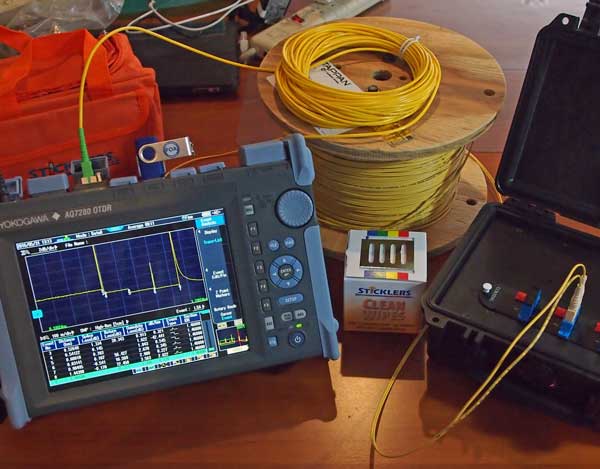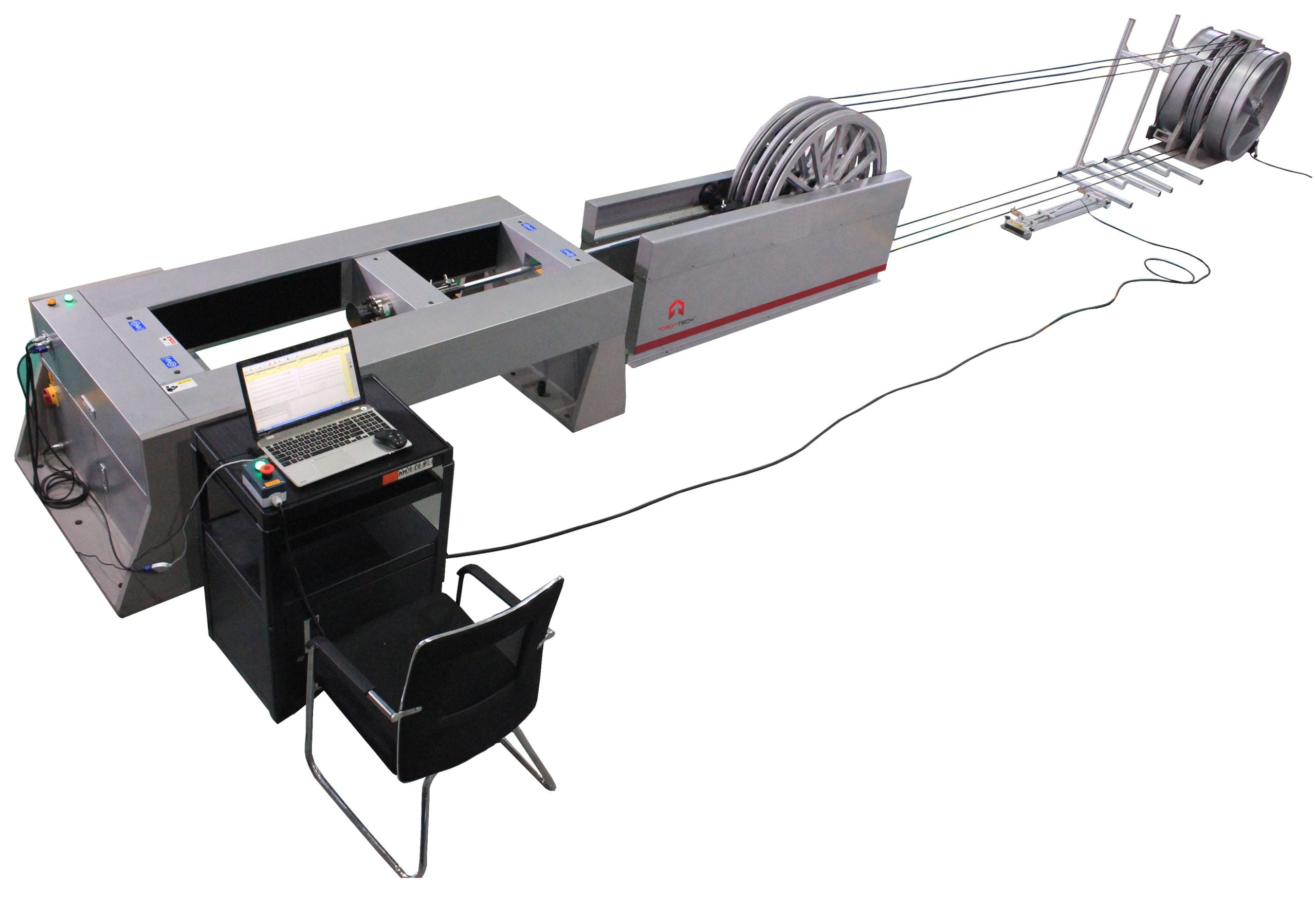The most advanced optical fibre diameter analyser supports fibre optic research and development.
Discover the Value of Optical Fibre Testing in Modern Telecom
In the world of contemporary telecommunications, the importance of optical fibre screening can not be overstated, as it serves as the backbone for ensuring network reliability and efficiency. What are the details benefits that routine testing offers, and how might it form the future landscape of telecoms?

Understanding Optical Fibre Screening
Optical fiber testing is a vital process in telecoms that guarantees the integrity and performance of fiber optic networks. This testing incorporates an array of procedures created to evaluate the physical and useful attributes of optical fibers - optical fibre diameter analyser. Trick specifications assessed include optical power loss, data transfer capability, and mistake place, which are important for keeping high-grade communication web links
The testing process generally entails the use of customized equipment such as Optical Time-Domain Reflectometers (OTDR) and Optical Power Meters. OTDRs are used to identify and characterize faults, interlaces, and ports within the fiber, while power meters measure the transmitted light signal strength to identify effectiveness.
In addition, testing is carried out at numerous stages, including throughout installation, upkeep, and troubleshooting, to ensure that the network satisfies sector standards and functional needs. Compliance with standards set by companies like the International Telecommunication Union (ITU) and the Telecoms Market Organization (TIA) is paramount.
Benefits of Routine Examining
Regular screening of optical fibres yields many benefits that considerably improve network integrity and performance. Among the key benefits is the early detection of prospective issues, such as breaks or deterioration in the fiber, which can bring about costly downtime if left unaddressed (fibre testing equipment). By determining these issues proactively, telecoms carriers can reduce service disruptions and make certain regular connection for their customers
Additionally, routine screening assists to preserve the stability of signal high quality. As optical fibers age, their efficiency can be impacted by factors such as ecological conditions and physical stress and anxiety. Regular assessments enable for the tracking of signal loss and total transmission efficacy, ensuring that the network runs at optimal levels.
An additional significant benefit is compliance with industry requirements. Normal screening sustains adherence to governing needs, therefore minimizing lawful and monetary dangers related to non-compliance. Furthermore, it boosts the overall life-span of the fiber facilities by facilitating timely upkeep and repair work.

Common Checking Approaches
Examining optical fibers employs various approaches to ensure the integrity and performance of telecoms networks. Amongst the most typical techniques is Optical Time Domain Name Reflectometry (OTDR), which examines the entire length of the fiber by sending out a pulse of light and gauging the reflections triggered by flaws or breaks. This technique offers in-depth information concerning the location and intensity of mistakes.
One more common approach is the usage pop over to this web-site of Optical Power Meters, which he has a good point gauge the quantity of light transferred via the fibre. This strategy assists establish the loss of signal strength, making certain that it meets sector standards. In Addition, Visual Fault Locators (VFL) are employed to identify breaks or serious bends in the fibre by forecasting a noticeable laser light into the cable.
Insertion loss screening is likewise important, as it evaluates the loss of signal power resulting from connections and entwines within the network. The use of Polarization Setting Diffusion (PMD) testing analyzes the impact of fibre qualities on signal honesty.
Each of these methods plays an essential function in preserving the performance and dependability of optical fibre networks, inevitably adding to seamless telecoms operations.
Impact on Network Performance
The stability and efficiency of optical fiber networks directly affect general network efficiency. In contemporary telecommunications, the efficiency of data transmission counts greatly on the high quality of the optical fibres used. Any type of degradation in the fiber's condition-- whether due to physical damages, contamination, or too much flexing-- can lead to boosted attenuation and signal loss, considerably affecting information stability and speed.
Normal optical fiber screening is crucial to recognize and fix potential problems prior to they materialize as network failings or downturns. Strategies such as Optical Time Domain Name Reflectometry (OTDR) and insertion loss testing allow professionals to measure the performance of fiber web links precisely. These great site tests not only assess the physical condition of the fibers yet likewise ensure compliance with industry requirements, therefore safeguarding the network's dependability.
Furthermore, a properly maintained optical fibre network adds to minimized functional prices and improved client contentment, as end-users experience fewer disruptions and greater information rates. Ultimately, the emphasis on extensive optical fiber screening practices works as a foundation for maintaining durable telecoms framework, making certain that company can meet the expanding needs for bandwidth and connectivity in today's digital age.
Future Patterns in Checking
As we look in advance, advancements in innovation are poised to reshape optical fibre testing in telecommunications. The rise of automation and expert system (AI) is anticipated to boost the performance and precision of screening procedures. Automated testing systems can conduct detailed analyses with very little human intervention, considerably decreasing the capacity for errors and expediting time-to-deployment.
Additionally, the combination of artificial intelligence algorithms will certainly allow predictive maintenance, permitting network providers to predict possible problems before they intensify into failings. This positive method not just boosts network dependability but also maximizes operational costs.
An additional emerging fad is the growth of mobile screening devices that supply real-time evaluation - fibre testing equipment. These devices will certainly equip service technicians to perform on-site diagnostics swiftly, assisting in quicker resolutions and enhancing solution quality
The development of 5G networks further necessitates the development of screening methods. As data transfer needs raise, standard testing methods might no longer are adequate. Ingenious solutions such as optical time-domain reflectometry (OTDR) and advanced spooky analysis will become vital in making sure the honesty and performance of high-speed connections.

Conclusion
In conclusion, optical fibre screening is essential for making sure the honesty and integrity of modern telecoms networks. Normal screening practices not only assist recognize potential problems such as signal loss and mistakes yet also contribute to improved network efficiency and consumer contentment. As the demand for seamless connectivity continues to expand, the fostering of innovative screening techniques will certainly play a crucial function in preserving high-grade network standards and sustaining the progressing landscape of telecoms.